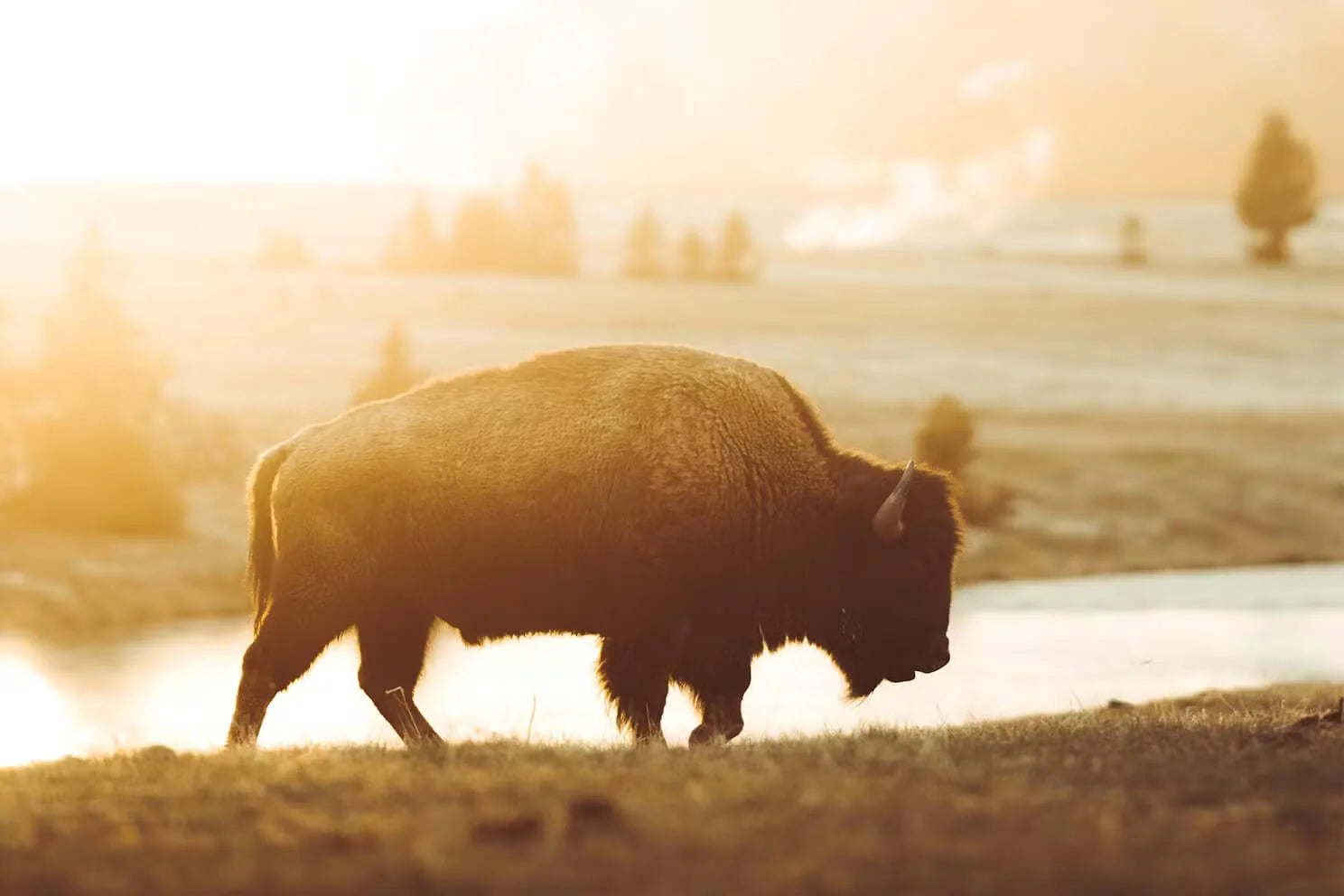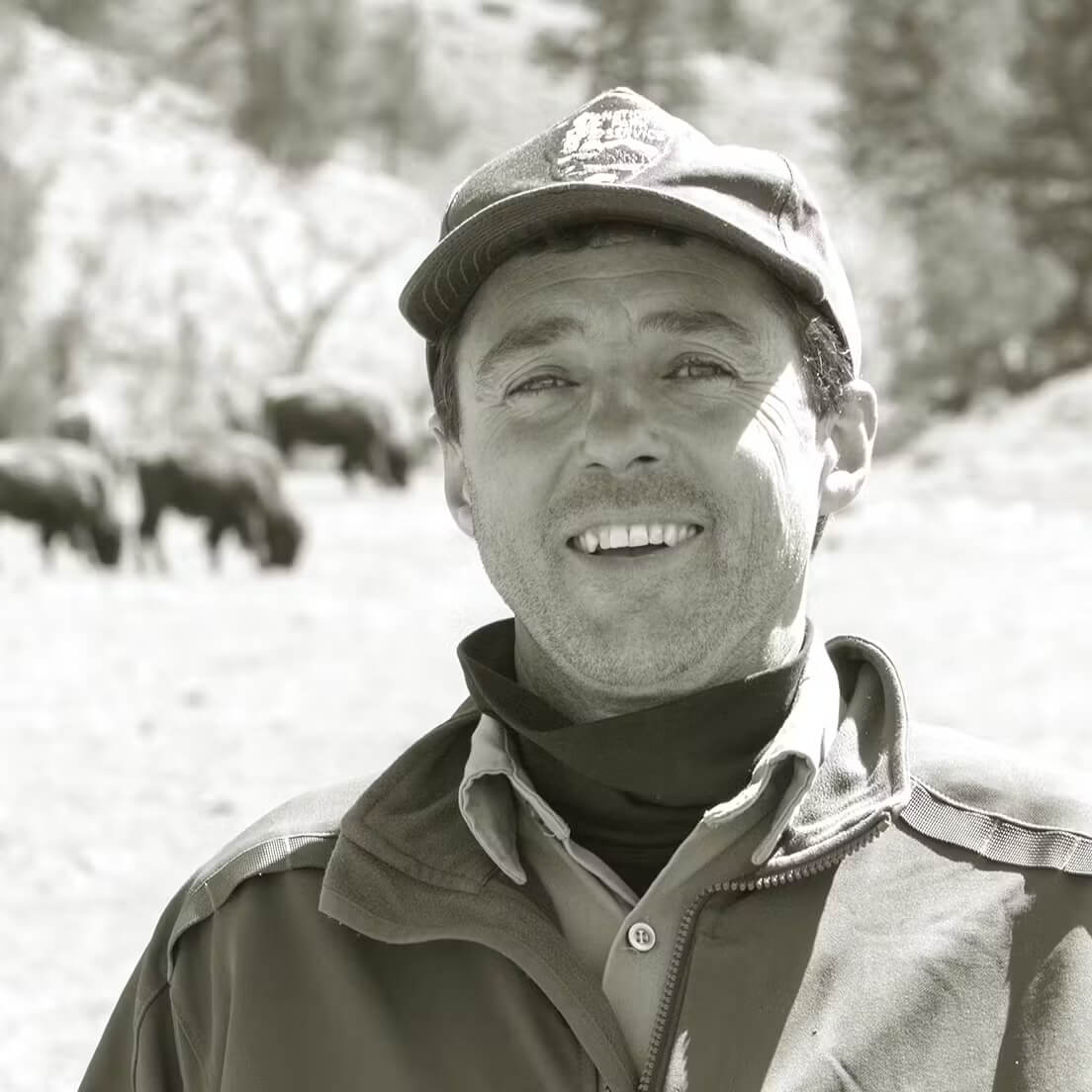
Earlier this year in February, 116 Yellowstone National Park bison were moved to the Assiniboine and Sioux Tribes at Fort Peck Indian Reservation in Poplar, Montana, where they'll be quarantined until given a clean bill of health, and then distributed to 26 tribes across 12 states. The transfer represented a milestone--the largest number of live Yellowstone bison relocated to a tribal reservation--and was made possible by the Bison Conservation & Transfer Program, an initiative driven by a coalition of governmental, tribal, and NGO partners.
Earlier this year in February, 116 Yellowstone National Park bison were moved to the Assiniboine and Sioux Tribes at Fort Peck Indian Reservation in Poplar, Montana, where they'll be quarantined until given a clean bill of health, and then distributed to 26 tribes across 12 states. The transfer represented a milestone--the largest number of live Yellowstone bison relocated to a tribal reservation--and was made possible by the Bison Conservation & Transfer Program, an initiative driven by a coalition of governmental, tribal, and NGO partners.
Dedicated to restoring the species to portions of its native range on tribal reservations, the program aims to support the culture, food sovereignty, and economy of Native American tribes, and ensure that the unique Yellowstone bison genome is preserved. It also helps prevent the death of hundreds of Yellowstone bison annually, as animals that seasonally wander outside of the protections of the park on their ancient migration paths are not tolerated by neighboring states due to concerns about disease risks to cattle.
That’s why before bison can be transferred to land outside Yellowstone, they must be quarantined and repeatedly tested for the disease brucellosis, a process that can take up to three years. Nevertheless, since 2019, a total of 414 Yellowstone bison have been transferred to the Fort Peck Indian Reservation for managing and re-distributing to other tribes. Due to a recent expansion of the Yellowstone bison quarantine facility, supported by funding from Yellowstone Forever, their facilities can now hold up to 200 animals annually and support the transfer of up to 100 bison to tribes each year.
The bison of Yellowstone are direct descendants of the last few free-roaming animals that remained after colonizers annihilated somewhere around 50 million. Only an estimated 360,000 bison now remain in North America today. Of these, less than one percent—about 31,000—roam freely on private and public lands, including national parks. About 4,830 bison call Yellowstone National Park home, comprising the oldest and largest wild bison herd in the world.
That basically makes Senior Bison Biologist, Chris Geremia, the humble manager of the most important public bison herd presently in existence. Working in bison conservation since 2000, Geremia splits his time between monitoring herds, analyzing research, preparing management plans, and navigating the cultural and political complexities that come with protecting this iconic national mammal of the United States. Here, we talk with Geremia on the importance of Yellowstone and the Bison Conservation and Transfer Program

JMM:What makes Yellowstone’s bison population special?
Chris Geremia:There's lots of buffalo in North America, but there's only one Yellowstone herd. They are the descendants of the last of the wild animals. In the late 1800s when we were trying to exterminate bison from this continent, the last survivors lived within the park at the time. It was down to a couple a dozen by 1902, before this country decided that we did not want to let bison go extinct. We brought in the army to protect those animals. We started a captive breeding program. And we’ve spent the last 125 years trying to restore them, and the animals here have gone on to restore most of the other federal and public bison herds that you find across the world today. The Yellowstone bison lit the spark for conservation, and thank gosh that fire never went out. Today, this is the only place where you can see bison and wolves and rivers and floods and migratory landscapes the way they should be, if you believe in wilderness and wild things and the importance of those things.
JMM:What role does the Bison Conservation & Transfer Program play in the transfers of bison that you mentioned above?
Chris Geremia:Well, state law in Montana and federal guidelines prohibit the transfer of live Yellowstone bison anywhere but to a slaughter house unless you can show that that animal doesn't have brucellosis. So up until 2018, it was a hundred percent impossible to take Yellowstone bison and place them into other areas to further conservation. Now, the Bison Transfer Program allows that to happen. It's a joint effort between the state of Montana, the National Park Service, the Animal and Plant Health Inspection Service, Indigenous tribes, and NGO partners to bring Yellowstone Buffalo back to tribal grounds through a rigorous disease-testing process.
JMM:How do you identify the needs or the opportunities to move bison onto tribal lands? How does the process of connecting tribes with bison work?
Chris Geremia:So, only certain animals qualify for quarantine. Those animals have to test negative for brucellosis. That's about 30% of the animals in the park population. It's not that they're all infected, it's just that they still have antibodies circulating in their bodies from when they dealt with brucellosis at some point in their life. And, we tend to target the youngest animals because the quarantine process takes a long time. It can take over a year for males, it can take three years for females because females have to breed in the program, along with a number of other different stipulations.
So, we're still learning what the true capacity of the program is… but when there's space, we reach out to the Assiniboine and Sioux Tribes at Fort Peck, in northeastern Montana. They have constructed a facility that meets state and federal regulations for doing disease testing on bison. But before the animals can actually go to Fort Peck, they have to first test negative for brucellosis at such levels that there's negligible chance that they have a disease. Once they're at Fort Peck, they have to do one more year of assurance testing before they can be released to other areas.
JMM:The Bison Transfer program offers a positive solution to a really challenging aspect of bison conservation. How will the program continue to evolve?
Chris Geremia:I think there will be a time in the near future when we will again want to consider if we need to build more facilities here, adjacent, or outside Yellowstone in order to continue to increase the number of bison going back to tribes. But the immediate next step is shortening timelines, shoring up assurance testing, improving quarantine capacity; generally, supporting tribes to be able to move those animals out of assurance testing so we can move Yellowstone bison to Indigenous lands across North America.
JMM:Why is it important to ensure these bison continue to have a place in our modern times?
Chris Geremia:Bison really shaped the continent and the culture that we all are living in today. And I think everybody realizes that when they suddenly see and experience this magnificent prehistoric animal in a prehistoric landscape. It inspires people with this sense of a past that we’ve lost connection with; a sense, really, of awe.